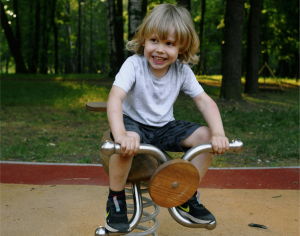Once discovered, the call of the sea can be hard to resist. For millennia people have been drawn to the sea, not only for food to fish and forage, or to travel and transport goods, but also to relax and play. The rhythm of the sea can be a call to tune into our own rhythm and it encourages us to relax and unwind. The wide open, blue horizon invites us to pay attention and notice the world around us in a different way. A sandy beach can offer a wonderful canvas for the artist in us all…
Sand Boat Building
My favourite childhood activity was to head to the beach with my little sister and build a sand boat. We’d then climb into our boat waiting for the incoming tide to reach us so we could set sail. Of course, it was a thrilling battle with the tide, which the sea always won. The water rushing around our moat, surrounding us before a bigger tidal surge would wash over and into our boat, breaking through the sand as we frantically and hopelessly tried to bail out the water. It was a game to see which one of us could hold out the longest before getting completely soaked by the sea and having to ‘abandon ship’ and return home as castaways with wet clothes and huge grins.
Sand Boat Building Tips
- Draw the outline for your boat in the sand using a stick or with your fingers.
- Along this line, dig out a deep moat, piling up the sand to build the sides of your boat.
- If the sand is very fine or crumbly you can dampen it with a little water to make it easier to sculpt and shape. Add some features to the interior of the boat using stones or sand to build a seat.
- Finish off with pieces of driftwood for a sail and rudder, and shells for the control buttons.
- If you wish the sea to reach your boat so you can ‘set sail’ quicker, dig a channel from the water’s edge to the moat around your boat – as the tide comes in it will push water into your moat.
Being by the sea is a wonderful experience but there are hazards to watch out for in order to stay safe. Make sure you learn about local conditions, such as water temperature, tides, weather forecast and rip currents and always supervise children.
2-Minute Beach Clean
Plastics have a devastating impact on the ocean. Plastics don’t biodegrade like organic material. Instead, they break down into smaller and smaller pieces called ‘microplastics’ that accumulate toxins and end up in the food chain and even our drinking water. Plastic waste is harmful to marine species, entangling them (e.g. in discarded fishing nets and ropes). It can also be mistaken for food by marine animals and birds, eventually killing them. It’s easy to feel overwhelmed with some of the challenges our planet is facing, but there are actions you can take. As Linzi Hawkin, co-founder of Protect Blue reminds me:
‘“What difference will one plastic bottle make?” said 7 billion people.’
There are some incredible campaigns happening globally and phenomenal communities that you can be a part of. One of my favourite movements is the #2minutebeachclean. It originated in the UK in 2013 after a series of brutal North Atlantic storms left beaches all over the UK littered with marine plastics. Using Twitter and Instagram to try to inspire others, Martin Dorey came up with the idea of doing just 2 minutes at a time – during each beach visit – and began using the hashtag. Since then many thousands of hashtagged posts have appeared on Instagram and Twitter from every continent.
Bring gloves and a bag to carry the rubbish you collect. Take care to avoid handling any dangerous or sharp objects and dispose of the rubbish responsibly.
This is a great exercise to do with friends and family. Why not use it as an opportunity to start a conversation about the items you find – do you use them or could you do without them? Imagine the journey of that item. Where did it come from? What did it see while making its way across the ocean?
Edited extract from 50 Things to do by the Sea by Easkey Britton, with illustrations by Maria Nilsson, published by Pavilion.
First featured in the Ni4Kids June 2021 issue.





